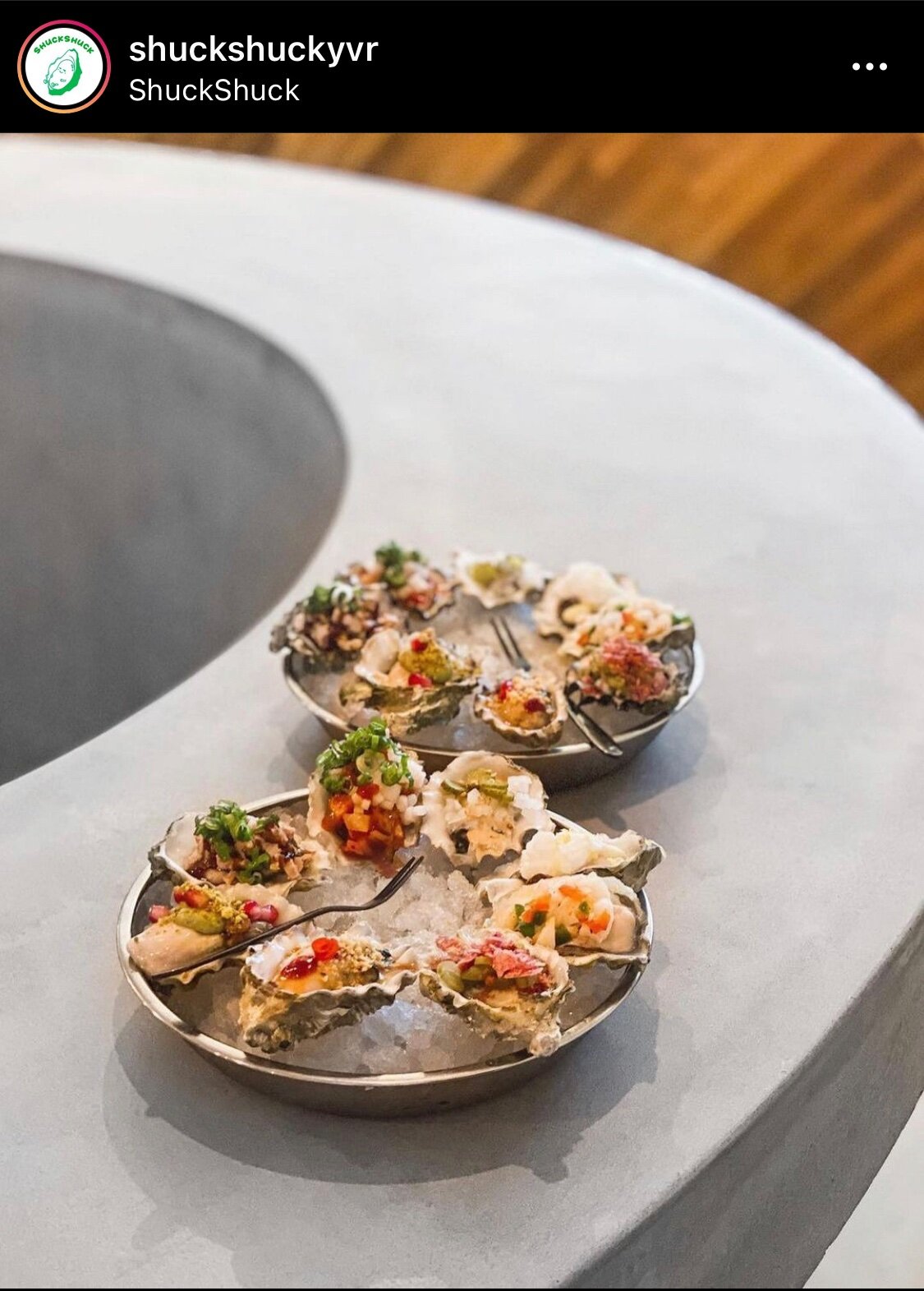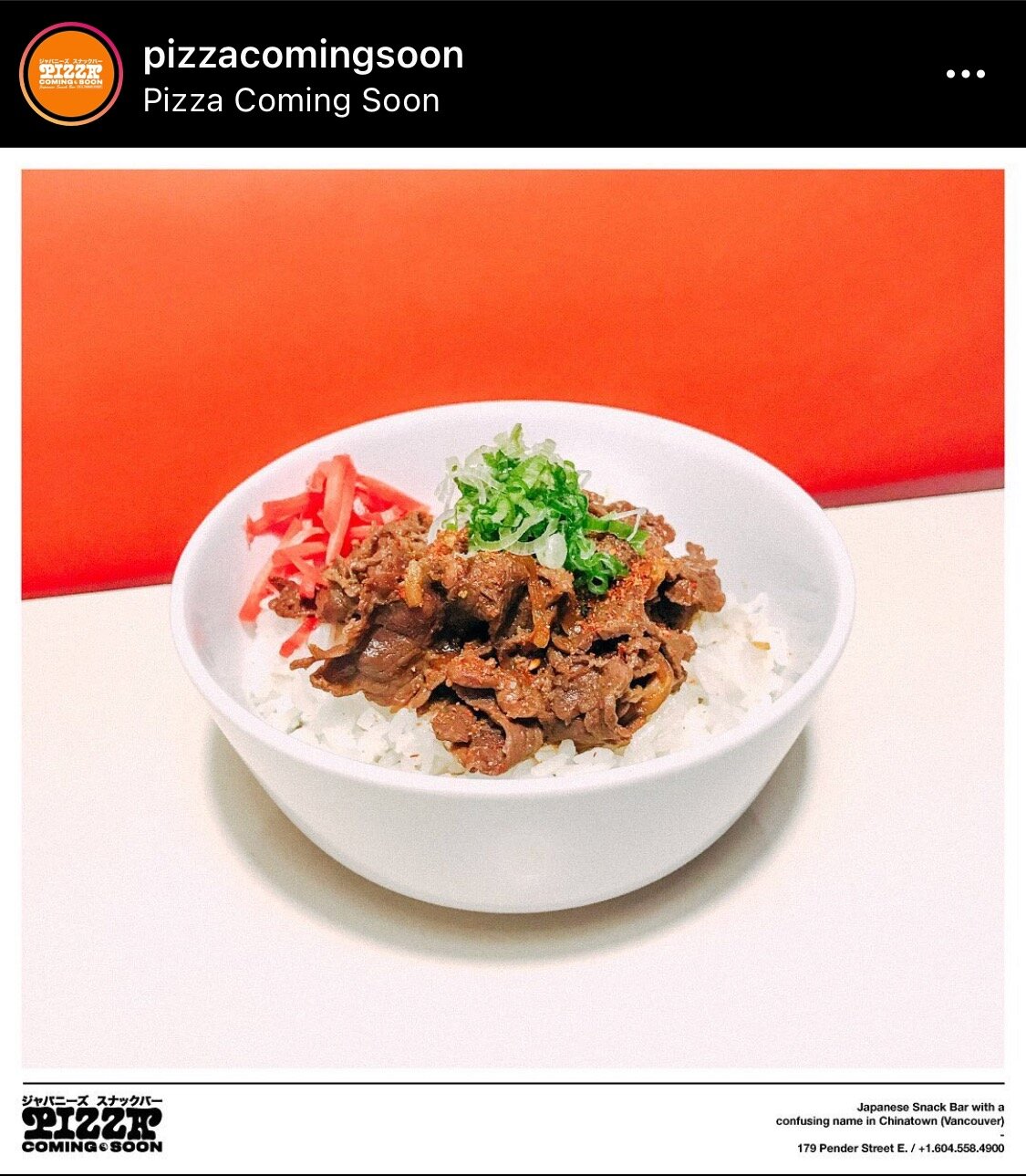A Tale Of Two World's - Living And Dining In Vancouver's Chinatown
Despair and optimism straddle a fine line in Vancouver’s iconic district. Finding comfort and understanding between the two has become a daily exercise of compassion and hopefulness.
Top by Jesse Winter/Bottom K&K IG
Jamie Mah @grahammah
Not going to lie, living in Chinatown can be a trip. I love it some days and loathe it others. The constant sirens can drive me nuts at times. I understand their role and pray that each time they blare, it’s an act of service for someone in need. The mood all around, especially these past few months has been hard. The furniture store below my building has been boarded up since March. Homeless men sleep on the street just down from my apartment entrance on the regular. Fat Mao, one of my favourite haunts for a bowl of soup has its windows broken all the time. Life around the London Pub is a haven of cigarette smoke and needles. I pass by knowing full well the depths of addiction and poverty. It’s hard to see daily and I’m trying my best not to become numb to those who struggle around me. Jen St. Denis’ recent expose from The Tyee about the high rate of COVID-19 infections among the poorest in the neighbourhood is sobering and not surprising.
“A survey conducted by the B.C. government showed that low-income people and racialized people are bearing the brunt of the pandemic, with steeper losses of income and work, more food insecurity and more difficulty accessing health care.
The local health area that includes the Downtown Eastside, Strathcona and part of Grandview-Woodland has a total population of 71,000 people. As well as having the lowest incomes and the lowest life expectancy among Vancouver neighbourhoods, the area also has the highest rate of Indigenous residents and the highest rate of seniors living on low incomes.”
Empathy from the masses is difficult to come by when under normal circumstances. Throw in a pandemic which has wreaked havoc on everyone’s state of mind, and you’ll be hard pressed if local citizens care enough to understand why so many in the downtown eastside are addicted to drugs. It also doesn’t help that the vast majority of petty crime residents of Chinatown see on the regular figures into clouding their moral judgments.
We talk about COVID fatigue, try living in this neighbourhood and not feel overwhelmed by all that’s around you. I’m not crying wolf as I choose to live here, but there’s a reason many in this city DO NOT venture into Chinatown or they cry NIMBY when the city attempts to relocate mental health, SRO’s and addiction services. It’s hard seeing such difficult circumstances everyday, especially when part of you wants to help but another has no idea how or even if you should.
But that’s part of the irony of this neighbourhood. A vast majority of Vancouver’s best bars and restaurants reside here. It’s as if fate of hand has led poverty and capitalism to land on the same street and its asked the citizens of Vancouver to choose which they care more about. Sadly, the coronavirus pandemic may have forced the selection of both on this one.
As of late summer, the vacancy rate in Chinatown increased by about 24% compared to before the pandemic, reaching a vacancy rate of 17% — considerably higher than the citywide average of 10%.
“In addition to economic challenges, a reduction in foot traffic related to the pandemic as well as the increased impacts of social disorder has led to a troubling perception of Chinatown as an unsafe and unkempt neighbourhood, hindering economic survival and recovery in the community,” reads the motion.
“These businesses are what make Chinatown; their character and customs which take place at these culturally relevant small businesses and arts organizations constitute the unique qualities of Chinatown that are considered to be intangible, living cultural heritage that will soon be lost forever.” — Kenneth Chan, Daily Hive
Even as Chinatown’s character clings to a hopeful end in sight, a breath of optimism has sprung. New restaurants have joined the area, bringing with them a renewed confidence that all isn’t doom and gloom.
Say hello to Bar Gobo, the geeky wine bar led by BC sommelier of the year Peter Van De Reep, formerly of Campagnolo Upstairs fame. Located in the old Tuck Shoppe spot, simple and cute, Bar Gobo gives Union Street another unique stop along a line of many. How fellow Union Street neighbour Crackle Creme has stayed open this long is beyond me? When it first arrived, I was confused by the concept, let alone its diminutive size. Shows what I know. But do check out Bar Gobo, Peter is great. Supremely knowledgeable and charming.
Then there’s the extremely popular and photo friendly Kevin & Kevin Juice Bar. I’ve yet to venture in, but have heard nothing but glowing raves. It’s expensive, which says something considering where it’s located. But I’m all for that if the product is good, which it looks to be.
In addition, I’ve heard it’s fun at night with DJ’s spinning away. Probably not the kind of jam I’ll look to hit up often, but a nice addition regardless. Also, goes to show you how important branding is when it comes to connecting with your audience. It’s as if I wrote about this three years ago. Good on them for understanding this. Anyways…moving on.
Next to Kevin & Kevin, literally next door, lies Barbara. Now here’s a restaurant with all the promise I long to see. Great name. Beautiful bar. Small and creative menu.
What’s not to love?
There isn’t much to quibble about except timing in my opinion. Part of the charm of the space is the connection between the bartender, Betty or Celia, and their chef/owner Patrick Hennessy (great last name by the way). Similar vibe to what you’d have received at Noturno in Gastown a few years back with H running things. But with plexiglass and masks all around, the feel is harder to engage with. I hope they’re doing well and can’t wait to see them in normal times. Hopefully soon. Yeah vaccines!
Staying along the same path, just a few doors down from Kissa Tanto, is the new Shuck Shuck Oyster Bar. Risky concepts are one thing. Opening an oyster bar based around themed flavours is next level precarious. I’m all for new ideas, so I wish them best, I just hope they understand their market. Note to mgmt — add your menu to website.
Further down and across the street you have Pizza Coming Soon, the newest second floor restaurant on Pender, just above the Dollar Store. With bright colours and a Japanese snack bar menu, I have a feeling this joint will have no trouble developing a regular fan base. I hope their cheeky name pisses off some too. We need more of this in this area.
I must profess before I touch on the last new spot I want to highlight, these four Pender Street newbies could not be any more different. It says a lot about the level of optimism/naivete this industry so desperately needs right now. New ideas. Fresh blood and a willingness to just go for it. Kudos to all of them.
Lastly, there’s Mila, the plant based restaurant from the Virtuous Pie team. Full disclosure, I’m not much of a fan of their original outfit. I tried it and it just wasn’t my thing. But who cares what I think, they’re expanding. Plus anything and everything is better than Juniper. I was thrilled to see it go. It was a terribly run business and the room was left to be desired. Outside of having employed bartenders Shaun Layton and Max Borrowman, I doubt many have missed it.
But hey, whatever, Mila it is now and it’s full every time I walk by, which is great to see. With the four above looking to be the risk takers of this lot, I expect Mila to thrive. Great timing for them too. Plant based options are on the rise and acceptance of the vegan ideal has never been more widespread. Somewhat ironic it sits across from Juke though. Funny contrast of styles.
Adding to the excitement of these ventures comes recent word of city council’s ambitious plan to buy up SRO’s in the area. So to see these new establishments and initiative take hold during this time, with all that’s happened and continues to transpire, is quite remarkable.
“People of the Downtown Eastside have a certain kind of strength, not always what they asked for, but it helps in times of crisis. COVID-19 is not the hardest thing people have gone through in this neighbourhood — it is probably in the bottom five of their immediate concerns. Things like housing, food, money, mental health and the overdose crisis that continues to kill people are top of mind.” — Sarah Blyth, The Tyee
For those looking to make a living serving food and drink in Chinatown, their fate is tied to how bad things get on their doorstep. Frustration and irritation present themselves more commonly than empathy and kindness. It’s a weird dichotomy so many inner cities face. Locating that symmetry of not leaving one behind in the pursuit of capitalism is a hard balancing act. This division is one I see daily and it will continue for some time.
“Poverty is a relationship involving poor and rich people alike”; though treated as if part of two different worlds, “the rich…wield enormous influence over the lives of low-income families.” (317) And they do so in a basic way. “Not everyone living in a distressed neighborhood is associated with gang members, parole officers, employers, social workers, or pastors,”
— Mathew Desmond, Poverty and Profit in the American City
A tale of two worlds indeed.
Finding comfort and understanding between the two has become a daily exercise of compassion and hopefulness. Let’s not lose sight of this.






